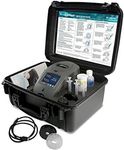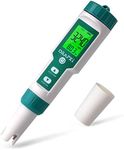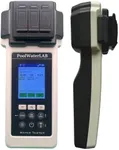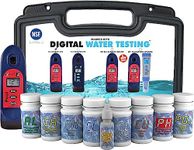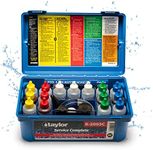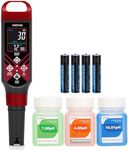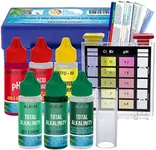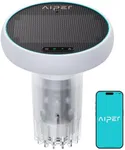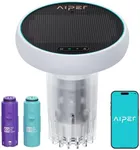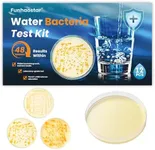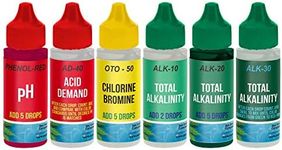Buying Guide for the Best Electronic Pool Water Tester
Choosing the right electronic pool water tester is crucial for maintaining the health and safety of your pool. An electronic pool water tester helps you monitor the chemical balance of your pool water, ensuring it is safe for swimming. When selecting a tester, consider the following key specifications to find the best fit for your needs.AccuracyAccuracy refers to how close the tester's readings are to the actual chemical levels in your pool. This is important because accurate readings ensure that you can maintain the correct chemical balance, which is essential for the safety and comfort of swimmers. Testers with higher accuracy are generally more reliable. Look for testers with a margin of error of ±0.1 or better for the most precise results. If you are a casual pool owner, a slightly less accurate tester may suffice, but for commercial or heavily used pools, higher accuracy is crucial.
Parameters TestedParameters tested refer to the different chemical levels the tester can measure, such as pH, chlorine, alkalinity, and calcium hardness. This is important because maintaining the right balance of these chemicals is essential for pool safety and maintenance. Basic testers might only measure pH and chlorine, while more advanced models can test for multiple parameters. If you are a beginner or have a small pool, a basic tester might be sufficient. However, for larger pools or if you want more detailed information, choose a tester that measures a wider range of parameters.
Ease of UseEase of use refers to how simple and straightforward the tester is to operate. This is important because a user-friendly tester will save you time and reduce the likelihood of errors. Testers with digital displays, simple buttons, and clear instructions are generally easier to use. If you are not very tech-savvy or prefer a hassle-free experience, look for testers that are known for their simplicity and ease of use. More advanced users might prefer testers with additional features, even if they are slightly more complex.
DisplayThe display is the part of the tester where you read the results. A clear, easy-to-read display is important because it ensures you can quickly and accurately interpret the readings. Look for testers with large, backlit displays that show results clearly, even in bright sunlight. If you have poor eyesight or will be using the tester in various lighting conditions, prioritize models with high-contrast, easy-to-read displays.
CalibrationCalibration refers to the process of setting the tester to a known standard to ensure accurate readings. This is important because regular calibration maintains the tester's accuracy over time. Some testers come with automatic calibration features, while others require manual calibration. If you prefer a low-maintenance option, look for testers with automatic calibration. However, if you are comfortable with a bit more hands-on maintenance, manual calibration can be just as effective.
DurabilityDurability refers to how well the tester can withstand regular use and exposure to pool chemicals. This is important because a durable tester will last longer and provide more reliable service. Look for testers made from high-quality, water-resistant materials that can handle the pool environment. If you plan to use the tester frequently or in a commercial setting, prioritize models known for their durability and robust construction.
Battery LifeBattery life refers to how long the tester can operate before needing a battery replacement or recharge. This is important because a longer battery life means less frequent interruptions and maintenance. Look for testers with long-lasting batteries or those that use common battery types that are easy to replace. If you use the tester frequently, a model with a rechargeable battery might be more convenient. For occasional use, standard batteries might be sufficient.



